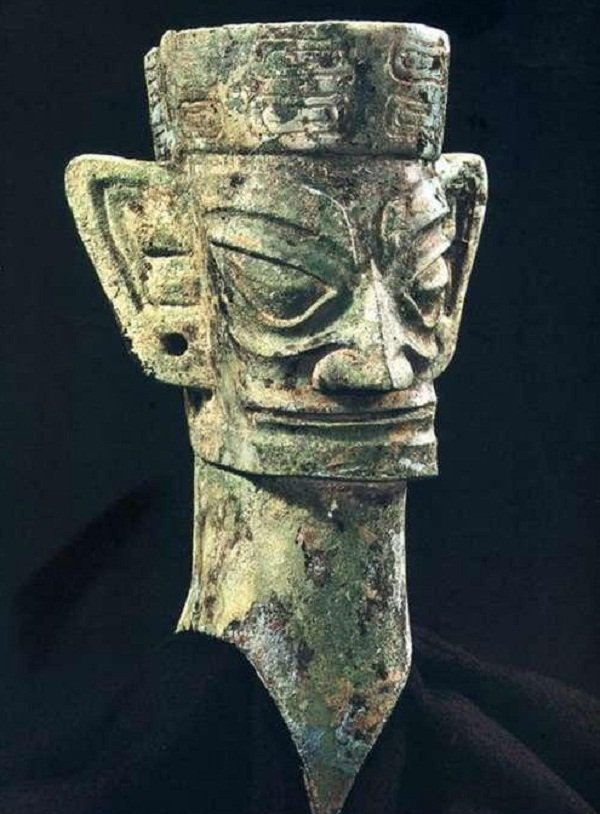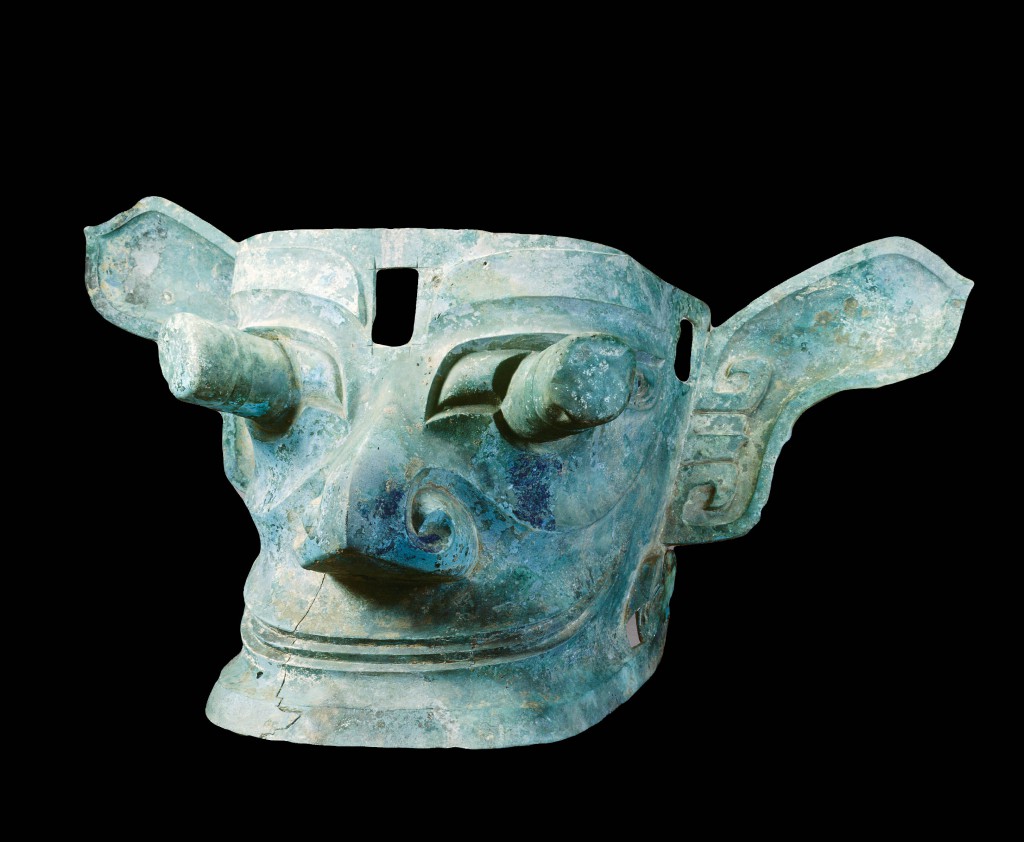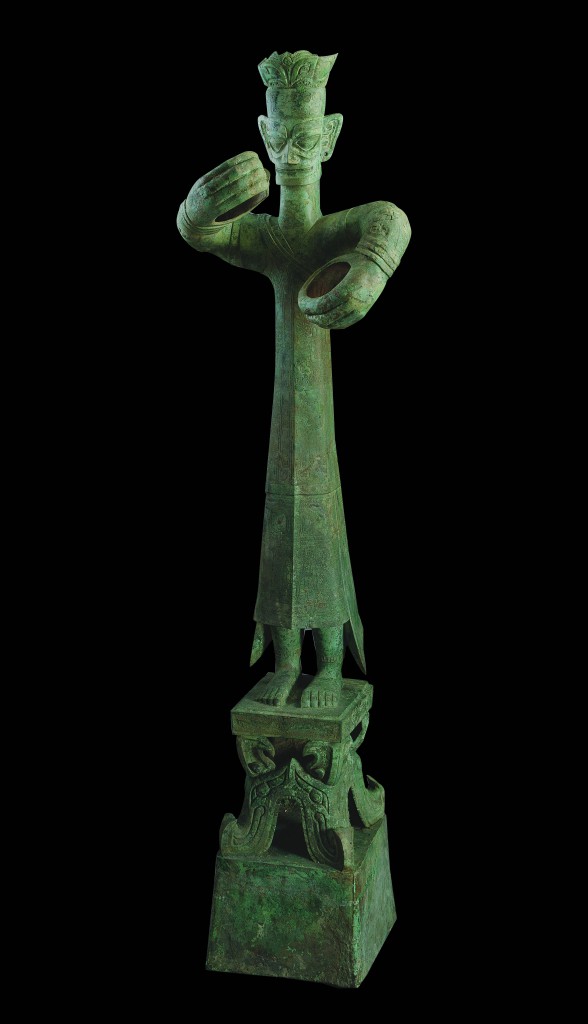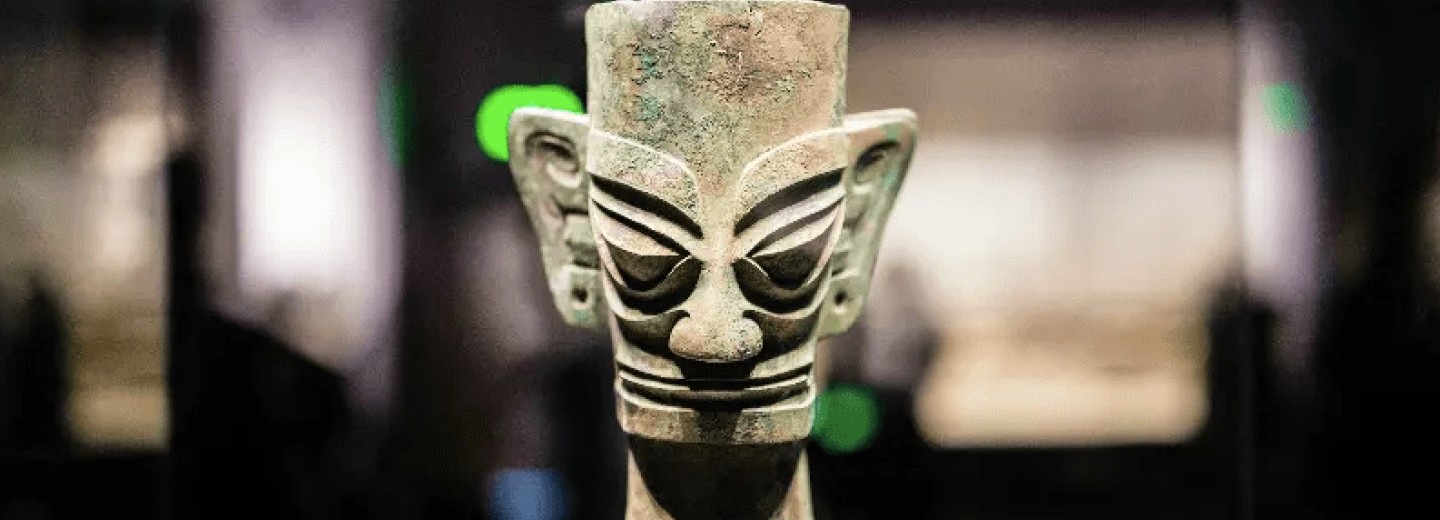Study of Sichuan research
In our post of 9th April’, we featured the Sanxingdui Civilization and alluded to the discussion taking place about Chinese origins. The excavations have also become a social media topic in China. These discussions mainly revolve around the big theme of ‘Where did the Sanxingdui civilization come from?’ Some of the arguments are absurd, but are widely circulated, so this article in DW News briefly discusses them.
“Chinese historians have concealed Sanxingdui research”
This view holds (correctly) that the emergence of Sanxingdui civilization has challenged the nature of Chinese civilization. For this reason, in covering the research of Sanxingdui, conspiracy theorists believe that China’s unspoken rule is not to discuss, not to publish papers, and to cover up research for a long time.
This statement is not true.
First, there have always been many discussions and disputes about Sanxingdui civilization, especially as to whether the Sanxingdui civilization was imported from West or South Asia. These began as early as the 1980s and 1990s. The academic community has discussed it publicly. Take the academic journal “Sichuan Cultural Relics” as an example.
In 1989, “Sichuan Cultural Relics” published an academic paper in which the author believed that Sanxingdui civilization is a composite cultural system. It was an ancient Shu culture born and grown in China. Based on this, it not only absorbed the elements of the Yin culture of the Central Plains, but also may have absorbed the elements from the ancient civilizations of West Asia. In 1991, “Sichuan Cultural Relics” translated and published an American scholar’s paper, which argued the opposite:
Although the birthplace of Sanxingdui culture is still unknown, the development of Sanxingdui bronze culture has nothing to do with the bronze culture of the Central Plains.
In 1993, “Sichuan Cultural Relics” also published an article “A Preliminary Study on the Origin of Sanxingdui sea-shells”. The article speculates that the Sanxingdui seashells may have four sources, the first is the Central Plains; the second is possibly transmitted through the North Silk Road and introduced into Sichuan via Central and West Asia; the third is possibly they come from Vietnam, Laos, and other places along the southeast coast; the fourth is imported from India by an ancient Silk Road.

Similar academic debates about other artifacts have continued. For example, in 2017, “Sichuan Cultural Relics” said:
It is entirely possible that the production of bronzes in the Sanxingdui culture will have been affected by the north-western region. Sanxingdui forging techniques still exist in the bronzes, which are also different from the mainstream techniques of the Central Plains Shang culture, but they may have something to do with the north-western region.

Bronze heads unearthed from the No. 2 Sacrificial Pit, from the official website of Sanxingdui Museum
In summary, the so-called “Chinese historians conceal Sanxingdui research” is just a conspiracy theory.
Why did Sanxingdui suddenly stop excavating?
This statement often appears at the same time as “Chinese historians conceal Sanxingdui research.” It stems from a criticism made by the Sichuan Provincial Institute of Cultural Relics and Archaeology issued by the State Administration of Cultural Heritage in 2005. The critical document stated:
On March 13, the Sichuan Provincial Institute of Cultural Relics and Archaeology carried out excavations of the Xishuimen and Qinglongbao platforms at Sanxingdui site without approval…. It instructed the Sichuan Provincial Institute of Cultural Relics and Archaeology to extract data and protect the illegally excavated sites. Backfilling will be carried out after the measures are taken. Before the publication of the report on the excavation of the Sanxingdui site, we do not agree to continue the excavation of the site.
Regarding this violation, Chen Xiandan, the scholar who participated in the excavation of the Sanxingdui site, has this explanation:
The excavation of Qinglong Bao was approved by the State Administration of Cultural Heritage in 2004, and the excavation was planned to be at the end of 2004. Due to insufficient funding and other reasons, the excavation was delayed until March 2005. Obviously, the State Administration of Cultural Heritage approved the excavation. The expiration date of the excavation had expired and should be resubmitted for approval. But we did not pay attention to this work.

Jade Cong unearthed in Sanxingdui, picture from the official website of Sanxingdui Museum
Before this, from 1987 to 2005, the excavation of the Sanxingdui site had never stopped.

Bronze longitudinal eye mask, picture from the official website of Sanxingdui Museum
Where did Sanxingdui’s bronze technology come from?
The answer may lie the following three smaller questions.
(1) Where did China’s bronze smelting technology come from?
There are at least two academic opinions on this issue, one is the local origin theory, and the other is the western one. The native origin is easy to understand and does not need to be explained. The main basis for the west is: judging from the bronze products unearthed by archaeology, the use of bronzes in various regions of China is earlier in time than in the central plains in the northwest. In the western argument, there are two types. One is that the bronzes in Northwest China were introduced to the Central Plains after independent development; the other is that the bronze technology in the Central Plains was introduced through Central Asia and West Asia’s grasslands. Northwest China is an important transfer station.
(2) What is the relationship between the bronze technology of Sanxingdui and the bronze technology of Central Plains?
The current consensus is that the bronzes of Sanxingdui can be divided into two categories. One category is bronze statues and bronze lizards, which are very similar to the styles of the Yin and Shang Dynasties in the Central Plains. The other category is bronze masks and bronze trees. It is difficult to find similar items in the Central Plains. Most scholars therefore agree that the Sanxingdui civilization is a product of multicultural influence.
However, there are still considerable differences in the academic community on the extent of this influence. Gao Dalun was the dean of the Sichuan Provincial Institute of Cultural Relics and Archaeology. His opinion is:
The bronze civilization is under the influence of the Central Plains. Thus, the main body of the culture must belong to China. I think it is strongly influenced by the Xia and Shang civilization, and it can be regarded as a sub-civilization. Its bronze, jade, even pottery, are related to the Central Plains, with some local factors.
The opinion of another Sichuan scholar Duan Yu is:
Some of the Erlitou pottery shapes in the Sanxingdui culture only appeared sporadically and in groups. Most of the most typical artifacts in the Erlitou pottery assembly, such as the tripod and jue, did not appear in the Sanxingdui culture. On the contrary, in the Sanxingdui culture, the pottery evolves in an orderly manner according to its own development sequence. This shows that although some pottery shapes of the Erlitou culture appeared in the Sanxingdui culture, the Erlitou pottery did not occupy an important position in the Sanxingdui pottery series. The two bronze ornaments appearing in the Sanxingdui culture are very similar to those unearthed in Erlitou and should be related to the Erlitou culture. However, the Erlitou bronze nobility, Qunego, and bronze tools are not found in Sanxingdui. The representative of the Sanxingdui bronze culture is the large-scale statue group that was later produced, which is absent in the Erlitou culture. This can also indicate that although some bronzes of the Erlitou culture have been found in the Sanxingdui culture, but it does not occupy an important position in the Sanxingdui culture, let alone occupy a dominant position.

Bronze large standing portrait, from the official website of Sanxingdui Museum
(3) Where does the copper in Sanxingdui come from?
This is another question that has not yet been answered.
In 1984, a Chinese scholar made a lead isotope study on the source of the mineral materials of bronzes in the late Shang Dynasty. The conclusion was that the mineral materials of some bronzes may originate from Yunnan. Later, many scholars from China, the United States, and Japan used lead isotopic experiments to trace the source of copper in Shang dynasty bronzes. The results were similar and pointed to copper mines in Yunnan. In 1995, the same scientists conducted lead isotope studies on the bronzes of Sanxingdui. Highly radioactive lead was found in these bronzes. This kind of special lead with high radioactive origin was commonly found in the bronzes of the Shang Dynasty.

Bronze Lei, quoted from the official website of Sanxingdui Museum
However, some scholars have reservations about these results. There is ‘not much archaeological evidence to support them’. The lead isotope analysis gives a mixed result. It is necessary to distinguish whether the data obtained represents the source of lead, tin, or copper. In addition to the incomplete mineral data, the origin information provided by this experiment has great limitations.
Thus, many issues regarding the Sanxingdui Civilization are still uncertain. Regardless of scholars or enthusiasts, most of the time they are opinions only.
Of course, if someone says: “I tend to think that Sanxingdui is an alien civilization”, it can only be a joke.
Source: blog.dwnews.com.
Worked on the article:

Wanlikhang





